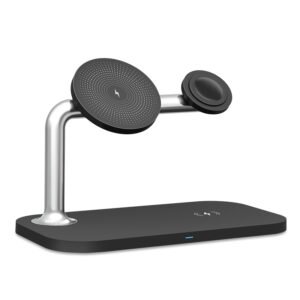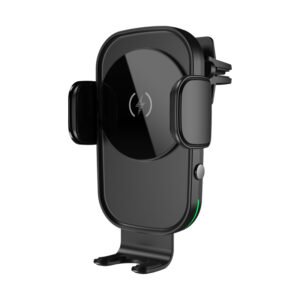1. Background and Demand for the Innovation of Charging Technology in Consumer Electronics
With the rapid development of technology, consumer electronics have become increasingly feature-rich. The widespread adoption of 5G and higher refresh rates for mobile devices have dramatically increased power consumption. For example, testing data from Tom’s Guide shows that the battery life of the iPhone 12/Pro in 4G mode is 10h23min/11h24min, but drops to 8h25min/9h6min in 5G mode, reducing battery life by about 20%.
Given the limited battery capacity of mobile devices, consumer demand for charging technology is on the rise. On one hand, the high refresh rates, wide adoption, and frequent use of smart devices lead to more frequent charging needs. On the other hand, as lifestyles evolve and reliance on mobile devices increases, users need the ability to charge anywhere and anytime, whether at work, on the go, or at home.
For instance, the global smartphone market grew from $161.1 billion in 2011 to $418.9 billion in 2022, with an increasing penetration of 5G smartphones. According to TechInsights, by 2024, the global penetration rate of 5G smartphones is expected to reach 72%, which will further increase power consumption. To address the issue of insufficient battery life, demand for charging products such as chargers, cables, and power banks is steadily growing.
Moreover, as consumer electronics expand into more application scenarios, advances in related technologies have led to higher power consumption, while breakthroughs in battery capacity have been relatively slow. This has spurred global demand for power banks. According to Grand View Research, the power bank market was valued at $4.8 billion in 2016. With emerging technologies like high-density cells, fast charging, and wireless charging, the market is set to grow rapidly. By 2027, the global power bank market is expected to reach $27.8 billion, with an annual growth rate of 19.25%.
2. Key Achievements in Charging Technology Innovation
(1) Breakthroughs in Fast Charging Technology Fast charging has become a key selling point for smartphones in recent years. Major phone manufacturers have been pushing the envelope on fast-charging power, moving from lower power to high-power charging. For example, in 2020, Huawei introduced a 66W fast charging technology, and brands like Xiaomi and Vivo followed with 120W fast chargers in the same year. By July 2022, iQOO released the iQOO 10 Pro, the first phone to support 200W fast charging.
As fast charging power increases, phone charging efficiency has significantly improved. For example, a 120W fast charger can fully charge a phone in just a few minutes. Although fast charging tends to increase the price of smartphones, consumer demand remains strong, reflecting its importance in the current market.
(2) Development of Wireless Charging Technology Wireless charging, once exclusive to high-end phones, has now spread to mid-range devices. With continuous efforts from leading smartphone manufacturers like Apple, Samsung, and Huawei, wireless charging is becoming mainstream in flagship phones and is expanding to mid-range models.
According to data, over 300 smartphones now support wireless charging. The Wireless Power Consortium (WPC) reported that in 2018, shipments of Qi-certified wireless transmitters and receivers reached 366 million units, up 77% year-on-year. Wireless charging is gaining momentum, and future adoption rates are expected to rise rapidly.
Wireless charging is also improving in terms of power and speed. For example, Huawei’s Mate40 series supports 50W wireless charging. In addition, long-range wireless charging solutions are developing, and commercial applications are expected to emerge in the near future.
(3) Innovations in Power Bank Technology Power bank technology has advanced with high-density cells, fast charging, and wireless charging. Today’s power banks can store up to several thousand mAh, significantly improving their capacity.
Fast charging has become standard for power banks, many of which support multiple fast-charging protocols. Wireless charging capabilities in power banks are also becoming increasingly common, offering users the convenience of charging without cables. In addition, power banks are integrating multiple functions, such as data transfer and lighting, making them versatile tools for modern users.
3. Contributions of Companies to Charging Technology Innovation
(1) Anker Innovations In 2018, Anker Innovations was the first to introduce GaN (gallium nitride) chargers, launching a new trend in the industry. In 2022, Anker unveiled a new line of “all-GaN” chargers, smaller in size and faster in charging while maintaining high safety standards. Anker’s GaN 150W charger can charge four devices simultaneously at full speed, demonstrating their leadership in innovation.
(2) OPPO’s Fast Charging Innovation OPPO has continually advanced its fast charging technology, from 20W to the current 125W. In 2014, OPPO introduced VOOC flash charging, which provided high conversion rates with lower heat generation. Over time, OPPO has introduced several new fast charging technologies and remains a pioneer in fast charging innovation.
(3) Romoss’s Strategic Transformation Romoss has adopted new technologies such as its MagTrinity magnetic absorption system, offering comprehensive magnetic charging solutions for Apple devices. Romoss has also emphasized smart manufacturing and eco-friendly materials in its product lines, demonstrating a commitment to innovation and sustainability.
4. Future Prospects of Charging Technology Innovation
The innovation of charging technology for consumer electronics will undoubtedly continue, bringing more convenience and efficiency to users while driving industry development.
(1) Fast Charging Technology There is still room for improvement in fast charging technology. With advancements in semiconductor technology, charging devices will become smaller and faster. In the future, we might see even more rapid charging, possibly allowing devices to charge fully in a few minutes.
(2) Wireless Charging Technology The development of wireless charging presents new opportunities. As the Qi2 standard becomes more widespread, we can expect improvements in speed and stability. Wireless charging technology is also evolving towards supporting longer distances and more efficient multi-device charging.
(3) Innovations in Power Banks The future of power bank technology will see further integration of high-density cells, fast charging, and wireless charging capabilities. Power banks may also incorporate solar energy and kinetic energy technologies, offering more sustainable solutions.
In conclusion, as charging technology continues to evolve, it will enhance the consumer experience while also contributing to the growth of the industry. The future promises smarter, faster, more environmentally friendly, and personalized charging solutions.













